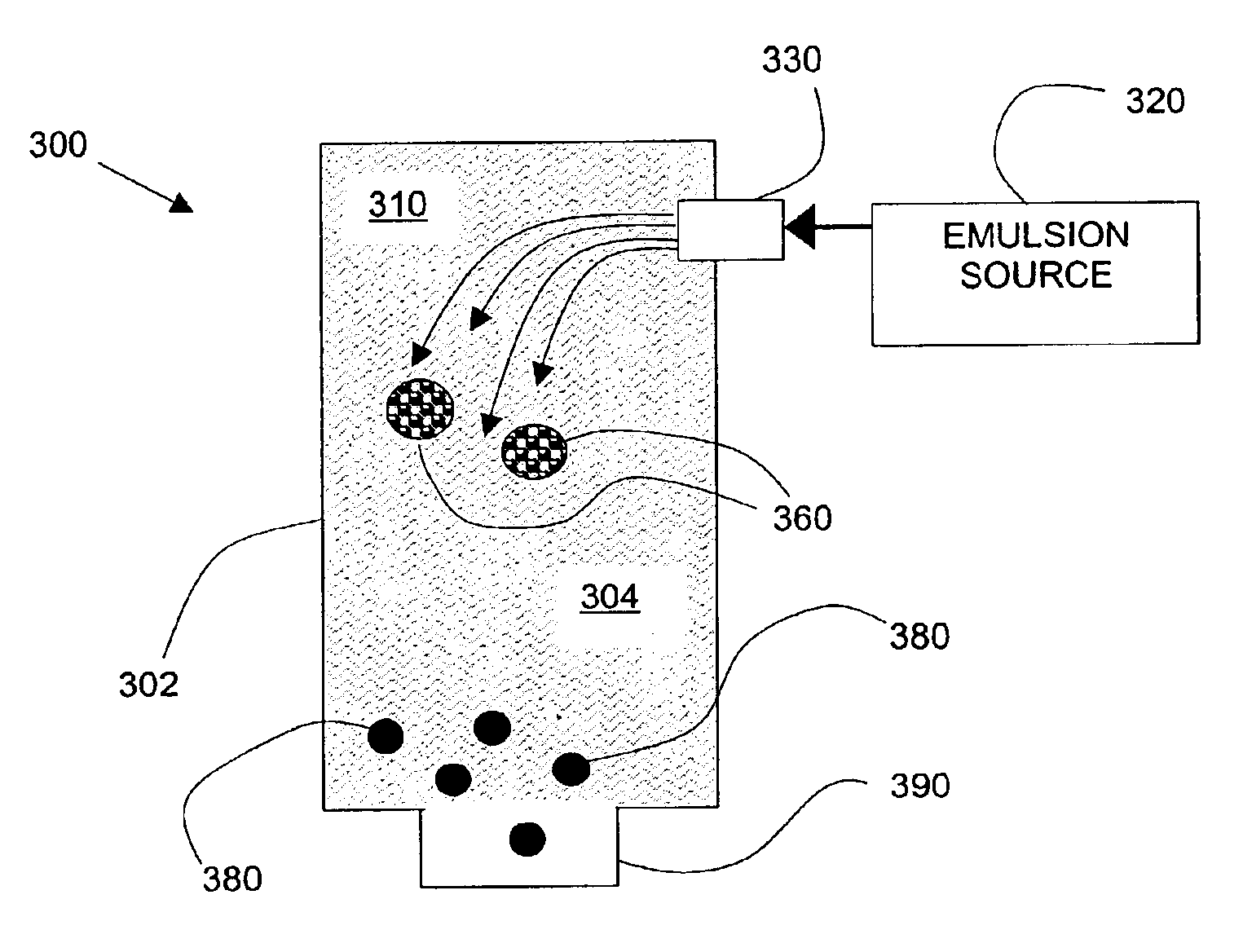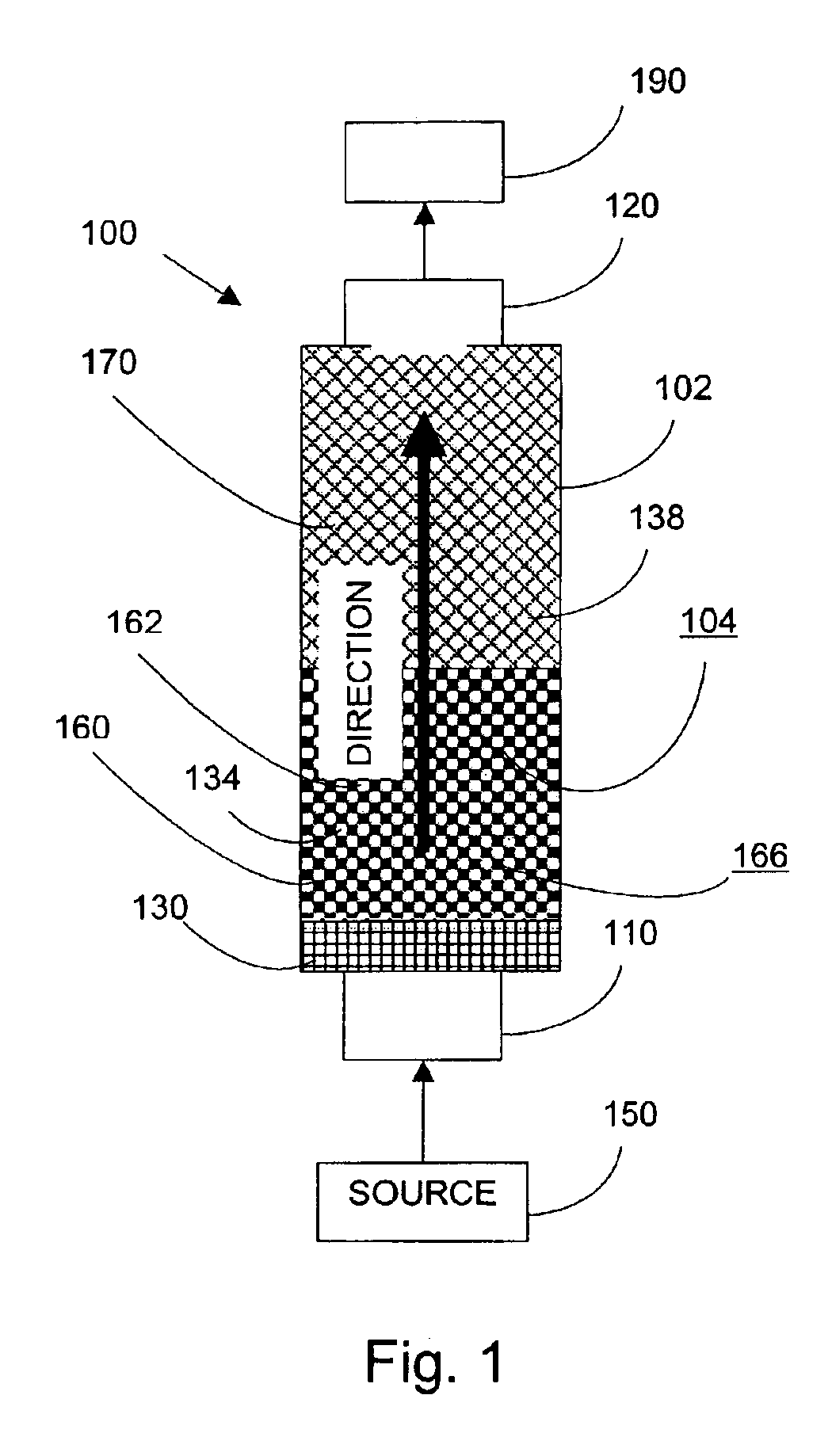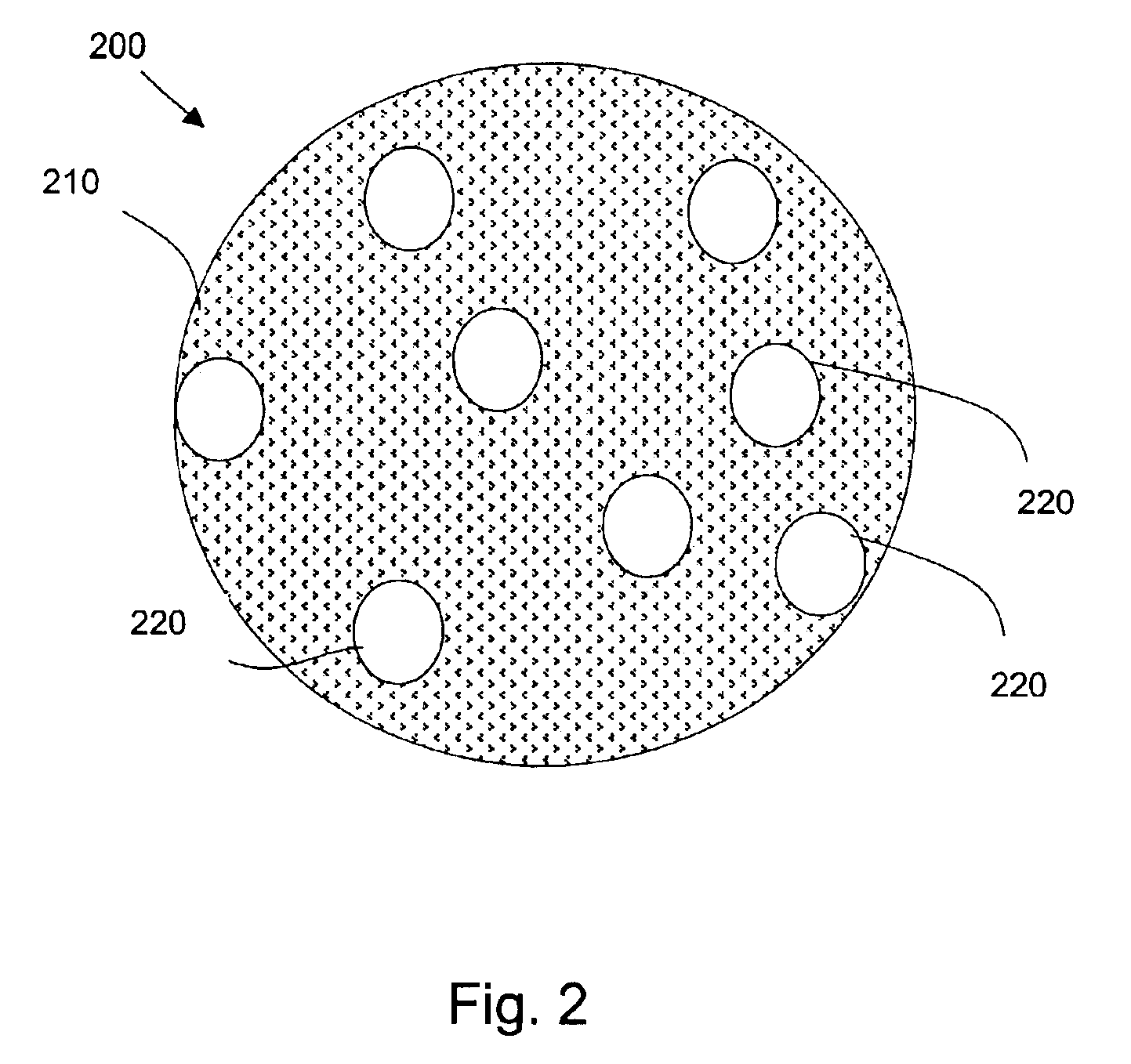Composite particles and method for preparing
a technology of composite particles and composite particles, which is applied in the direction of colloidal chemistry, other chemical processes, separation processes, etc., can solve the problems of thermally labile drugs and polymers, particle size distributions that are not easy to be distorted, and the shearing energy required for jet milling
- Summary
- Abstract
- Description
- Claims
- Application Information
AI Technical Summary
Problems solved by technology
Method used
Image
Examples
example 1
[0070]EXAMPLE 1—Illustrates the production of Indomethacin (IN) (10% loading) loaded Polylactide-co-glycolide (PLGA) particles.
[0071]Preparation of PLGA / IN Emulsion:
[0072]Initially, a PLGA / IN solution was prepared by dissolving 10% (w / wEA) of PLGA (6.0 g) and IN (0.6 g) into water-saturated ethyl acetate (EA) to form SOLUTION 1(a). 0.7 grams of poly vinyl alcohol (PVA) surfactant was dissolved in water saturated with ethyl acetate to form SOLUTION 1(b). SOLUTION 1(a) was mixed into 140 grams of SOLUTION 1(b) to form MIXTURE 1(a). Accordingly, the resultant concentrations were EA at 30% w / w total, water at 70% w / w total, EU at 10% w / w EA, and PVA at 0.5% w / w water. MIXTURE 1(a) was emulsified using a dispersator for 3 minutes at 5000 rpm to form EMULSION 1(a).
[0073]Production of IN Loaded PLGA Particles:
[0074]In an the extraction chamber having a volume of 10 ml, glass wool and beads were packed inside the dead volume of the extraction chamber to prevent liquid entrainment during ext...
example 2
[0077]EXAMPLE 2—Illustrates the production of Ketoprofen (KP) (25% loading) loaded Polylactide-co-glycolide (PLGA) particles.
[0078]Preparation of PLGA / KP Emulsion:
[0079]EMULSION 2(a) in EXAMPLE 2 was prepared in a manner similar to the EMULSION 1(a) in EXAMPLE 1 except as indicated below. EMULSION 2(a) was prepared having using 4.0 g PLGA and 1.0 g KP in 40.0 g of ethyl acetate, which was dispersed in 160.0 g water with 0.5% w / w PVA.
[0080]Production of PLGA / KP Particles:
[0081]Particles in EXAMPLE 2 were produced in the same manner as the particles that were produced in EXAMPLE 1.
[0082]Analysis of PLGA / IN Particles:
[0083]Analysis of the morphology of PLGA / KP particles in the aqueous colloidal suspension obtained was performed in the same manner as EXAMPLE 1. FIG. 6 is an SEM micrograph of PLGA / KP particles produced in EXAMPLE 2. As in EXAMPLE 1, the particles are spherical in shape having a fairly narrow size distribution. From the DLS results, the particles produced had a volume ave...
example 3
EXAMPLE 3—Illustrates the production of Insulin (INS) encapsulated in hollow PLGA particles.
[0084]Preparation of PLGA / INS Emulsion:
[0085]Initially, 1.0 grams of insulin (INS) was dissolved into 10 milliliters of a very dilute solution of hydrochloric acid (pH 4) to produce SOLUTION 3(a). SOLUTION 3(b) was prepared by dissolving into dichloromethane (DCM): PLGA at 5% w / w DCM, and polyvinyl alcohol at 5% w / w DCM. 10 mls of SOLUTION 3(a) was mixed into 100 ml of SOLUTION 3(b) to form MIXTURE 3(a). MIXTURE 3(a) was dispersed using a commercially available homogenizer (e.g., Microfluidics Inc., Model 110L) at 14,000 psi (3 pases) to form a W / O EMULSION 3(a).
[0086]PVA 0.5% (w / w) was dissolved in 160.0 grams of water-saturated EA solution to form SOLUTION 3(c). 40.0 grams of EMULSION 3(a) was mixed into 160 grams of SOLUTION 3(c) to form MIXTURE 3(b). MIXTURE 3(b) was emulsified using a dispersator for 3 minutes at 6000 rpm to form a W / O / W multiple EMULSION 3(B).
[0087]Production of INS Loa...
PUM
| Property | Measurement | Unit |
|---|---|---|
| Diameter | aaaaa | aaaaa |
| Diameter | aaaaa | aaaaa |
| Size | aaaaa | aaaaa |
Abstract
Description
Claims
Application Information
 Login to View More
Login to View More - R&D
- Intellectual Property
- Life Sciences
- Materials
- Tech Scout
- Unparalleled Data Quality
- Higher Quality Content
- 60% Fewer Hallucinations
Browse by: Latest US Patents, China's latest patents, Technical Efficacy Thesaurus, Application Domain, Technology Topic, Popular Technical Reports.
© 2025 PatSnap. All rights reserved.Legal|Privacy policy|Modern Slavery Act Transparency Statement|Sitemap|About US| Contact US: help@patsnap.com



